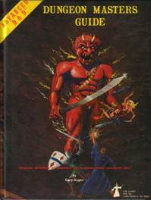I generally just use the whiteboard as a sketchpad. Many, many encounters are either random, or made up when the players choose to go in a completely different direction than Planned. More or less what Sven is saying. If I know the plan is to assault the castle, I'll set that up, and have mini tokens and stuff. But just adventuring? It's narrative description, and the 9 players I have have told me they are more than happy with it. We did a scenario yesterday, 9 heroes with bows, and one dwarf with an axe, killed 35 orc scouts on patrol in 4 narrative combat rounds, playing the narrative style One Ring RPG by cubicle 7. Total time was about 45 minutes for that engagement. Then when the party arrived at a local nearby town under siege by an orc unit of 100, I expected the party would attack, and got ready to sketch a map. Instead, they narrated "One of us is a woodcutter, two are dwarves with axes. We are going to try cutting down tress above the village, rolling logs down the mountainside onto the orcs." I thought this a great use of a surprise one shot tactic, seemed like a great idea for a scene if it was a TV show or film, and they rolled it out with great critical success rolls. Surprised from above, the morale of the enemy broken, the orcs retreated, and town saved. The second encounter was all narrated took me 5 minutes,took the players three dice rolls, I didn't even use a sketch. This is why I prefer narrative style games these days. There are all sorts of players, seeking all sorts of games. Lay out your style and people will fit it. Some seek 4e, and a grid, some seek narrative style, some seek a tightly plotted mystery. Good luck.






